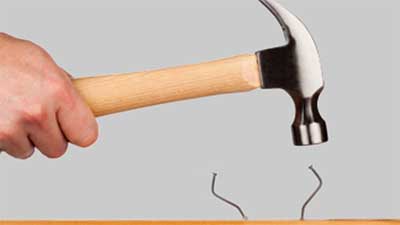It’s the dreaded call that no contractor wants to get: the construction dispute. It  happens when your company has completed work on a project, and someone finds fault with your work or something has failed, and they request remediation and damages, or are suing your company.
happens when your company has completed work on a project, and someone finds fault with your work or something has failed, and they request remediation and damages, or are suing your company.
Construction defect can be defined as the premature failure of any building component or system. And it is generally the result of improper design or installation, product failure, or bad material selection. Different from an ordinary insurance claim, the problem may take years to materialize, and even longer to defend.
How can a contractor prevent a construction claim in the first place?
Use these three systems.
Quality Assurance/Quality Control Program (QA/QC)
Every contractor should have a complete plan for each project to ensure that it is built correctly and performs as designed, and full support of the management team to verify drawings and specifications.
Materials must also be chosen to meet design specs and building code requirements. Products should also be compatible with each other. All manufacturer installation instructions should be followed, and anything amiss should be reported immediately, preferably in writing, and all work should stop immediately until the problem is resolved. Deliver your written report to the architect or other party, keeping a copy of it for yourself. Inspect everything as you go along, creating reports along the way on customized forms.
Also, perform a QA/QC inspection before starting any task, during installation, after any changes, upon completion, and when warranties expire. Keeping good notes will help you verify quality construction practices.
Management should also provide adequate training. Subcontractors should be chosen carefully for their qualifications to perform the work, meeting your qualification standards. Always require a subcontractor contract that includes state-specific indemnification language and insurance requirements, and make sure it is signed and dated.
Documentation
Your documentation will be critical in the event of a construction claim, so keep good records such as superintendent log books, inspection forms, material purchase orders, training documents, drawings, specifications, change orders, and any correspondence and notes in a job file. Since you don’t know which document will be required, document everything, including verbal orders and changes. Take photographic evidence throughout the process. Lack of documentation could lead to your losing the case.
Since a construction claim can occur long after completion of a project, check your state for its document retention requirements.
Quick Response to Claims
Your speed in responding to a claim may help resolve the issue quickly. But don’t necessarily jump in to fix the alleged issue, as it could cloud the original workmanship or mask the problem. Be prepared to provide documentation and physical evidence quickly so all parties can review the facts of how and why the problem occurred.
Since no company is immune to construction defect claims, having systems in place could just be your saving grace.
–excerpted from “Three Keys to Preventing Construction Defect Claims” by Michael Koppang, Construction Business Owner, July 2014
Do You Need Expert Witness Representation on a Construction Claim?
Först Consulting Group can represent either side of a construction claim, and advocate on behalf of one, but not both, sides in any dispute. We are key in providing an unbiased inspection, reports, and expert witness testimony. If you are involved in a construction dispute, call Först.




